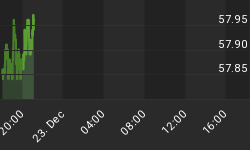G7 finance ministers and central bankers ought to realize that their USD-supporting rhetoric (Bernanke, Lagarde and Trichet) will be devalued by a currency market that sees no motive in buying the greenback as long as improved risk appetite continues to shore up a USD-driven global liquidity. With US earnings beating estimates and the "commodity central banks" not mincing their words about tightening liquidity, the only viable way for US policy makers to stabilize the USD is to start withdrawing liquidity...rather than talk about when is a good time to do it.
Bernanke Delves into Fiscal Exit Strategy Fed Chairman Bernanke may have intended to support the dollar when he raised the importance of timely exit strategy, but the way he went about it had the opposite effect. Bernanke said adopting a fiscal exit strategy "is critically important in order to maintain confidence in our economy and confidence in our currency". So far, the Fed has made it clear it would not be exiting its monetary policy strategy any time soon (aside from talk about reverse repos). Bernanke's speech has placed the onus on the Treasury as far as fiscal policy is concerned.
Consequently, currency traders hearing such remarks quickly conclude that neither an exit strategy from fiscal nor monetary stimuli is likely, which only boosts traders to sell the dollar. Meanwhile, French Fin Min Lagarde resorted to her own way of supporting the greenback by: (i) reiterating the need for a strong dollar in the Eurozone; and (ii) used the policy element by estimating that no exit strategy would be pursued until 2011 when the situation in terms of growth stabilizes.
Sterling remains the reluctant gainer against the USD with GBPUSD struggling to make a convincing break (close) above the $1.64, which was could failonce again at 5-week intervals. Qatar Holding sale's of 379 million shares in Barclays put a small dent on risk appetite, but the latter remains fired up by the onslaught of better than expected US tech earnings. Our concern with sterling is not only maintained by the inability of the BoE to consider an exit strategy but also from the market's wide anticipation of further asset purchases (QE). Resistance remains at $1.6455, a break of which calls up $1.6530. Trend line resistance from the Aug 5 high suggests downside intact to call up $1.6330, $1.6270.
GBPJPY consolidation persists around the 148.50s -- the 38% retracement of the decline from the 162.90 high to the 139.67 low. These 4 consecutive daily failures reflect sterling's diminishing lustre during improved risk appetite, which is highlighted against JPY, suggesting prolonged GBP weakness vs. EUR, USD and AUD.
CAD awaits the Bank of Canada decision (13:00 GMT) --widely expected to keep rates unchanged at 0.25%. Considering the loonie's 5% gain from last month's BoC announcement, markets can count on another reference to the currency strength in the policy statement. But these concerns could go unnoticed by traders if the BoC highlights the improved dynamics for employment and consumer demand. USDCAD eyes trend line resistance at 1.0360, a breach of which will retest 1.0430. As long as the right shoulder on 1.0360-65 remains intact, USDCAD bearishness would revisit 1.0280 and 1.0240.
















